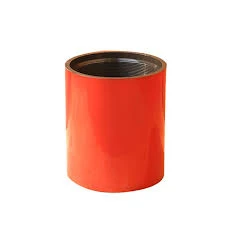- Afrikaans
- Albanian
- Amharic
- Arabic
- Armenian
- Azerbaijani
- Basque
- Belarusian
- Bengali
- Bosnian
- Bulgarian
- Catalan
- Cebuano
- Corsican
- Croatian
- Czech
- Danish
- Dutch
- English
- Esperanto
- Estonian
- Finnish
- French
- Frisian
- Galician
- Georgian
- German
- Greek
- Gujarati
- Haitian Creole
- hausa
- hawaiian
- Hebrew
- Hindi
- Miao
- Hungarian
- Icelandic
- igbo
- Indonesian
- irish
- Italian
- Japanese
- Javanese
- Kannada
- kazakh
- Khmer
- Rwandese
- Korean
- Kurdish
- Kyrgyz
- Lao
- Latin
- Latvian
- Lithuanian
- Luxembourgish
- Macedonian
- Malgashi
- Malay
- Malayalam
- Maltese
- Maori
- Marathi
- Mongolian
- Myanmar
- Nepali
- Norwegian
- Norwegian
- Occitan
- Pashto
- Persian
- Polish
- Portuguese
- Punjabi
- Romanian
- Russian
- Samoan
- Scottish Gaelic
- Serbian
- Sesotho
- Shona
- Sindhi
- Sinhala
- Slovak
- Slovenian
- Somali
- Spanish
- Sundanese
- Swahili
- Swedish
- Tagalog
- Tajik
- Tamil
- Tatar
- Telugu
- Thai
- Turkish
- Turkmen
- Ukrainian
- Urdu
- Uighur
- Uzbek
- Vietnamese
- Welsh
- Bantu
- Yiddish
- Yoruba
- Zulu
Coupling Solutions for Tubing Systems in Various Applications and Industries
Understanding Coupling for Tubing A Comprehensive Guide
In the realm of industrial applications and piping systems, the term coupling refers to a critical component that plays a pivotal role in connecting sections of tubing or piping. Couplings serve various purposes and come in different styles, types, and materials, each designed to meet specific operational requirements. This article aims to explore the concept of coupling for tubing, discussing its importance, types, installation techniques, and considerations for selection.
The Importance of Couplings
Couplings are essential for enabling the flow of fluids and gases through tubing systems while ensuring durability and reliability. They facilitate the connection of pipelines, accommodate changes in direction and diameter, and allow for easy assembly and disassembly. In industries ranging from oil and gas to water supply and manufacturing, effective coupling aids in maintaining the integrity of systems while preventing leaks and pressure loss.
Types of Couplings
1. Threaded Couplings These are one of the most common types of couplings used in tubing. They utilize male and female threads that allow for a secure mechanical connection. This type is often used when disassembly is expected, making repairs easier.
2. Welded Couplings Welded couplings provide a permanent connection between two sections of tubing. This method requires welding and is ideal for high-pressure applications where leak prevention is critical. However, the disadvantage is that they cannot be easily disassembled.
3. Flanged Couplings Characterized by their flat surfaces that can be bolted together, flanged couplings are versatile and allow for easy access for pipeline maintenance. They are commonly used in large-diameter pipes and where frequent disassembly is required.
4. Compression Couplings These couplings use a compression fitting to create a secure connection without the need for welding or threading. They provide flexibility in installation and can accommodate slight misalignments.
5. Flexible Couplings Designed to connect tubing that may experience movement, flexible couplings can absorb shock and vibrations, making them ideal for applications that require a degree of mobility.
Installation Techniques
The installation of couplings requires attention to detail to ensure a leak-proof connection. Key steps include
coupling for tubing

1. Preparation Before installing, clean the ends of the tubing thoroughly to remove any debris or rust. This helps ensure a tight fit.
2. Alignment Proper alignment of the tubing is critical. Misalignment can lead to undue stress on the coupling and potential failure.
3. Torque Application For threaded couplings, applying the correct torque is essential. Over-tightening can cause damage, while under-tightening may result in leaks.
4. Inspection After installation, inspect the connection for any visible gaps or misalignments. Regular maintenance checks can help catch potential issues early on.
Considerations for Selection
When choosing the right coupling for your tubing system, several factors should be evaluated
1. Material Compatibility Ensure that the coupling material is compatible with the fluid or gas being transported. Consider factors like temperature, pressure, and potential corrosive materials.
2. Pressure Rating Couplings should be rated for the maximum pressure of the system to prevent failure.
3. Size and Diameter The selected coupling must match the tubing's size and diameter for proper fit and function.
4. Application Type Understanding the specific application—be it high vibration, high temperature, or harsh environments—will guide the selection of appropriate coupling types.
Conclusion
In summary, couplings for tubing are indispensable components that facilitate the efficient and safe transport of fluids and gases across various industries. Understanding the types, installation practices, and selection considerations for couplings not only improves system reliability but also enhances overall operational efficiency. By investing time in selecting the right coupling and ensuring proper installation, industries can mitigate risks associated with leaks and maintain a safe working environment.
-
Tubing Pup Joints: Essential Components for Oil and Gas OperationsNewsJul.10,2025
-
Pup Joints: Essential Components for Reliable Drilling OperationsNewsJul.10,2025
-
Pipe Couplings: Connecting Your World EfficientlyNewsJul.10,2025
-
Mastering Oilfield Operations with Quality Tubing and CasingNewsJul.10,2025
-
High-Quality Casing Couplings for Every NeedNewsJul.10,2025
-
Boost Your Drilling Efficiency with Premium Crossover Tools & Seating NipplesNewsJul.10,2025







